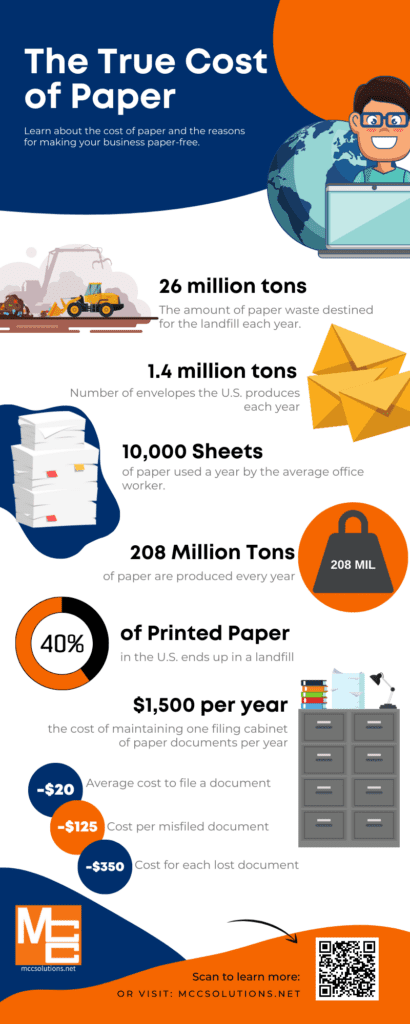Our Blog

Top 5 Document Management Pain Points
In today’s fast-moving business world, managing documents well is essential. Businesses run on data and records; handling these efficiently can boost operations, compliance, security, and profits. This guide looks at the top five challenges in document management and how to solve them.
What is DMS?
Document management means using tools and methods to handle, track, and store electronic documents. Good document management software (DMS) makes work easier, improves access, enhances security, and reduces physical storage costs.
However, many businesses struggle with document management, which affects their performance. We’ll examine the five main issues and offer practical solutions.

1. Inefficient Document Retrieval
Many businesses lose productivity by spending too much time looking for documents in messy cabinets or digital spaces. Studies show employees use about 2.5 hours daily, or 30% of their workday, just searching for information.(Source: IDC)
Slow document retrieval can cause delays in making decisions, poor customer service, and a higher chance of losing important files. For fast-paced or rule-heavy industries, this can mean fines, lost trust, and a bad reputation.
Good document management saves time and protects vital business info, helping operations run smoothly and keeping you competitive.
Solution: Businesses should adopt a document management system (DMS) with strong search features. A DMS can cut down on search time by offering advanced indexing and search tools, along with access to documents from anywhere. This way, employees find what they need quickly, no matter where they are.
2. Poor Document Security
With increasing cyber threats, protecting sensitive documents is essential for businesses. Traditional storage and basic digital options lack strong security.
Keeping sensitive files in filing cabinets exposes them to risks like fire, water damage, or theft. Unlike digital files, paper documents can’t be encrypted or password-protected, making them easy targets for data breaches. Also, without tracking, it’s difficult to monitor who views or alters a document, leading to potential security and compliance issues.
Solution: Switching to secure document management software solves these problems. It reduces the risk of physical damage by digitizing documents and storing them in secure, cloud-based systems. The software includes encryption, multi-factor authentication, and controls on who can access documents. This keeps sensitive information safe from external threats and ensures only approved users can access it.
Moreover, advanced systems track who accessed or changed a document and when, improving transparency and accountability. Using secure document management software helps businesses safeguard their data and comply with regulations.
3. Compliance and Regulatory Challenges
Meeting today’s regulations means having systems that can prove you’re following the rules. Paper documents are hard to track and secure, making compliance tough. Laws like HIPAA for healthcare, GDPR for data protection in Europe, and the Sarbanes-Oxley Act for finance demand strict document control.
Manual handling of documents often leads to errors, risking non-compliance with these laws. Lost or wrongly accessed paper files can threaten a company’s compliance status.
Solution: Document management software (DMS) makes compliance easier by automating it. DMS can follow specific industry laws by managing how long documents are kept and when they’re deleted. Also, it allows only approved users to access documents and tracks who does what with each document, crucial for compliance checks. Switching to digital documents and using a DMS not only smooths out the compliance process but also lowers the chance of facing penalties, helping businesses maintain a trustworthy reputation.
4. High Costs of Paper-Based Processes
Printing, storing, and handling paper documents can be expensive and hurt a company’s profits.
The cost of a paper-based system includes buying paper, printers, ink, and storage like filing cabinets or storage units. It also takes a lot of employee time to print, file, find, and distribute these documents. Mistakes, such as losing documents, can cause delays and fines. A study by Price Waterhouse shows that managing each paper document costs about $20, misfiling costs $120 to fix, and replacing a lost document is around $220. Plus, keeping a four-drawer filing cabinet costs about $2000 a year.
Solution: Moving to a digital document management system (DMS) saves money by reducing the need for paper and storage.
Also, a DMS automates tasks like searching for and organizing documents, freeing up employees for other tasks.
Digital documents are less likely to get lost, reducing errors and compliance risks. Using a DMS saves money over time and helps businesses operate more efficiently and legally.
5. Difficulty in Collaboration and Sharing
Working together with paper documents or on different digital platforms is slow and hard.
Using paper makes it tough to work together, especially for teams in different places. You can’t update paper in real-time or work on it together without delays and mistakes. It’s also hard to keep track of the latest version after many changes.
Solution: Document management software makes it easy to collaborate by keeping documents online. Everyone can access and edit documents from anywhere, updating them together instantly. Equally important, it keeps track of all versions, so you always know which one is current and can go back to older ones if needed. This digital approach removes the hassle of paper and boosts teamwork, accuracy, and project speed.

Adopting proper document management practices is essential for modern businesses looking to enhance efficiency, reduce costs, and improve data security. By addressing the pain points discussed above, organizations can overcome document management challenges and position themselves for success.
Embrace the future of efficient document handling with MCC’s comprehensive document solutions. Keep outdated systems from holding your business back. Contact us today to discover how we can help you better transform your document management processes.
Looking for something specific?
Want the latest news in your inbox?
Categories
Industries
Solutions
MCC News




